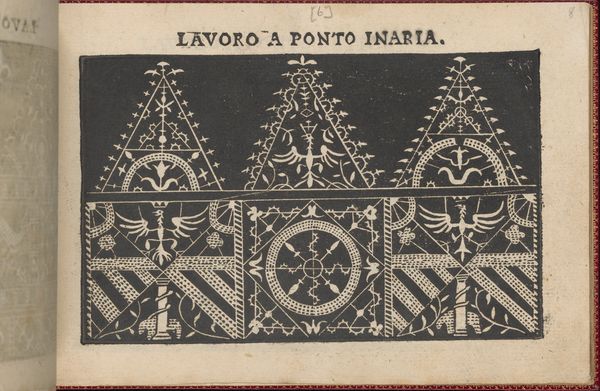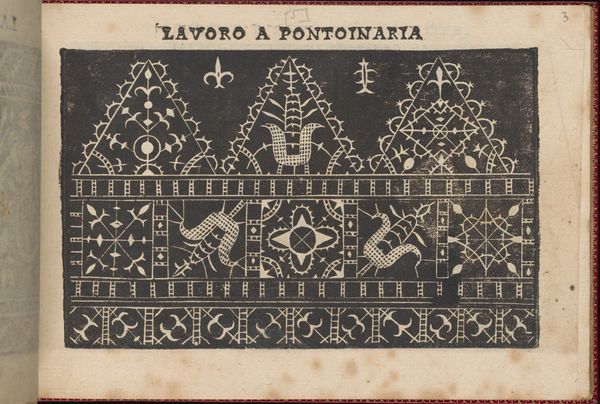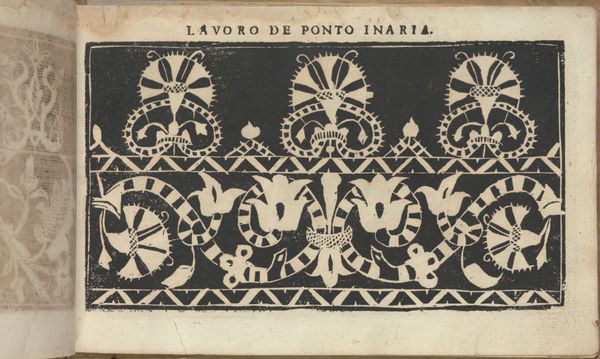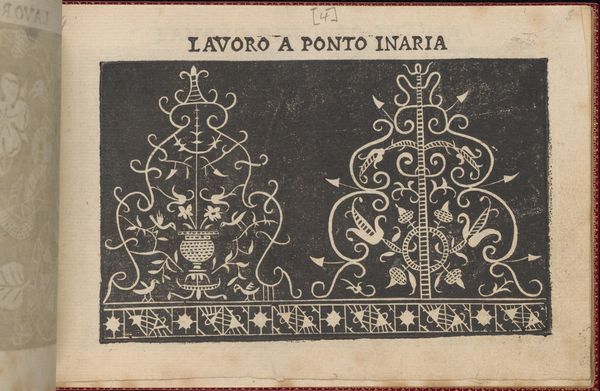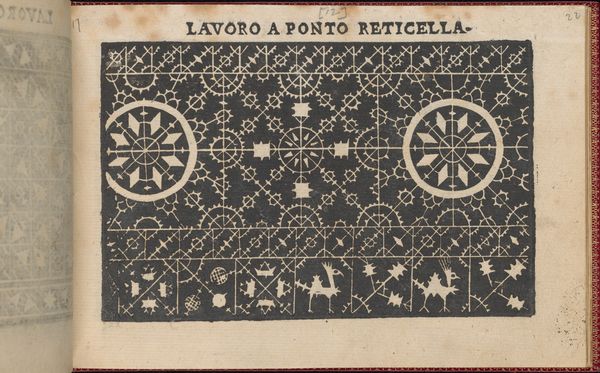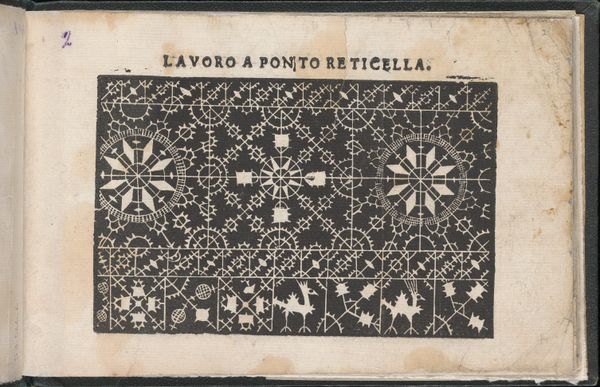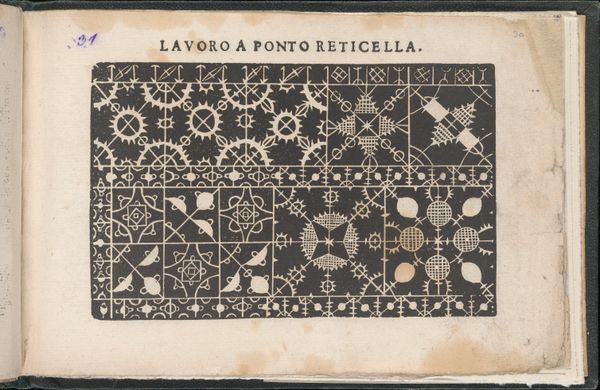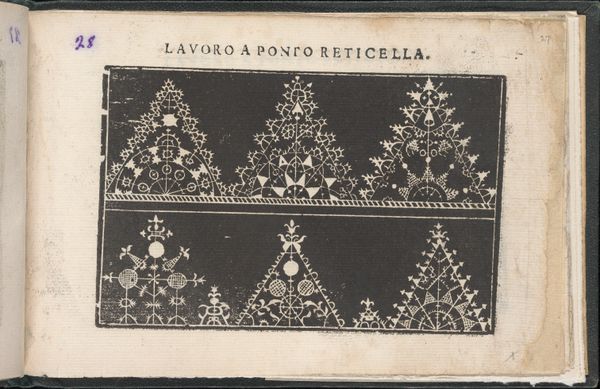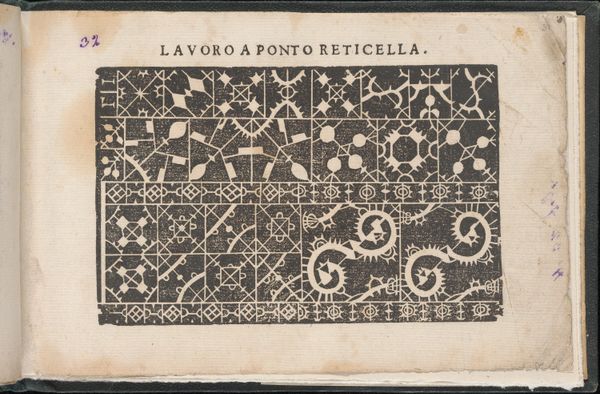
Gemma pretiosa della virtuose donne, page 15 (recto) 1625
0:00
0:00
drawing, graphic-art, print, paper, engraving
#
drawing
#
graphic-art
#
medieval
# print
#
paper
#
11_renaissance
#
engraving
Dimensions: Overall: 5 5/16 x 7 11/16 in. (13.5 x 19.5 cm)
Copyright: Public Domain
Curator: This is a page from Isabella Catanea Parasole's "Gemma pretiosa della virtuose donne," created around 1625. It's an engraving printed on paper, residing here at The Met. The book was intended as a pattern book for lace and embroidery. Editor: Intricate! My first impression is that this image embodies geometric precision, which is not always how one expects to consider lacework, or even just ‘craft’. The repetition creates a rhythm… but that’s expected of something instructional, isn't it? Curator: Precisely. Consider the materiality—this isn't just about the aesthetic design but the accessibility of that design. The printing process allows the pattern to be widely distributed and easily reproduced. The labor here, while skilled, becomes somewhat democratized through print. Editor: I suppose it’s useful to remember that, within its socio-political context, this imagery wouldn’t exist without certain historical realities. Printed patterns such as these allowed women from all social classes access to contemporary fashions, shaping perceptions of taste. Was there also a market element— a sort of instruction manual for women interested in artisan-level professions? Curator: Absolutely! There’s a performative element to its function. Women gained status by proving their artistic handiwork, but they would need these patterns to practice. The repetitive patterns shown would, of course, enable skill mastery with certain handiworks, enabling both creativity and opportunities for female artistry that might be considered radical today! Editor: So, not only is this a beautiful object, but also a subtle artifact of social change and empowerment through creative agency. Very interesting to consider from a feminist point of view. Curator: Exactly. It shows how craft and art intersect with labor, economics, and the shaping of cultural identities. And its impact is definitely long-lasting. Editor: An insightful view on what it meant for women to produce fine textiles—it was far more than aesthetic. Thanks for walking me through that.
Comments
No comments
Be the first to comment and join the conversation on the ultimate creative platform.

